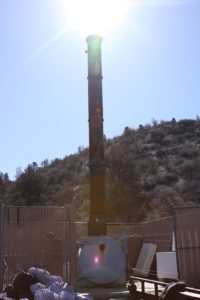
In a perfect world, all cats would have a loving home. Unfortunately, unaltered cats permitted to roam freely either become feral or produce feral offspring. Feral cats are wild and cannot be turned into house pets. When feral cats end up in shelters, they have little hope of coming out alive. Rather than kill feral cats, I promote reducing their population through a process called TNR (trap/neuter/return).
For feral cats who find their way into an animal shelter, I propose a “working cat” program to help save their lives by putting them to work in our neighborhoods and ranches.
Through a Working Cat Program, feral cats are spayed and neutered and released into areas where they can do what they do best: prevent an overpopulation of rodents. Their reputation as stealthy and successful exterminators is well known and many homeowners and businesses rely on cats as a “green” rat abatement program.
Sadly, I was recently helped rescue two dogs exposed to rat poison; one we were able to save, the other succumbed despite our best efforts. One benefit of a Working Cat Program is that it keeps rodents in check without toxic pest control chemicals that are dangerous to pets, wildlife and children.
The program also helps improve public health. Rodents carry many diseases including plague, leptospirosis, hantavirus, murine typhus, rat bite fever, salmonella enterica serovar typhimurium, and eosinophilic meningitis.
The beauty of working cats is that rodents flee the area when these cats make their presence known. These sleek legends of grace and beauty give off an odor through their paws as they prowl. Once rodents get a whiff of feline, they vacate the premises.
Less grisly and more effective than glue traps, cats go about their “work” naturally. They prowl, they eat and they sit in the sun; although they prefer to spend much of their time hiding.
Working cats are spayed or neutered so they don’t contribute to the feral cat population. They are vaccinated so they help mitigate cat diseases in our community. They are microchipped so they can be returned to their owner should they end up in a shelter, and they are ear-tipped (under anesthesia while the cats are being altered; veterinarians notch an ear, which is the widely recognized sign that a feral cat is altered).
When Working Cats are “employed,” they are transported in large wire cages where they are housed for about a month at their new location. This process is called recolonizing. It takes about 30 days for a barn cat to be comfortable enough to consider their new environs home. Local animal shelters should be able to help you colonize your working cat and teach you how to care for them.
Working cats can be put in any safe area – businesses, hotels, industrial parks, residences, and barns. If you are interested in participating in this cost-effective, humane rat abatement program, call your local shelter to be added to their Working Cat list. Y ou will be contacted when your cat is ready for you.
If you don’t have a rodent problem but love cats and would like to help fund this non-lethal, humane program, please make a donation to your local shelter and specify “Working Cat program.”
For more information on feral cats visit Developing an Effective Strategy for the Permanent Reduction of Feral Cat Populations.


